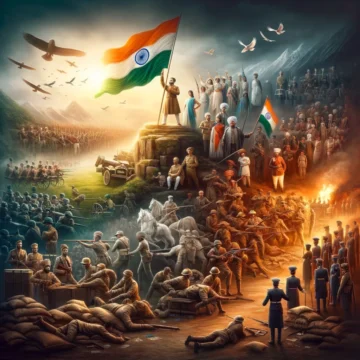The mutiny in India in 1857, recognized as the First War of Indian Independence, marked a significant point in history. This upheaval began in Meerut, fueled by the British imposition of the Enfield P-53 rifle cartridges, rumored to be greased with cow and pig fat, offending both Hindu and Muslim soldiers. The rebellion quickly escalated when 85 sepoys, punished for their refusal to use these cartridges, sparked widespread mutiny. Liberating their comrades and killing their British officers, they advanced towards Delhi, declaring the Mughal emperor as their leader and catalyzing other regions to join the resistance. This event not only challenged colonial rule but also united diverse sections of Indian society in a fight for sovereignty, laying foundational principles for future struggles for freedom.
Tag: sepoy rebellion
Indian Rebellion of 1857: Key Battles and Heroes
The Indian Rebellion of 1857, a seminal event in the annals of Indian history, marked the first major challenge to British colonial rule. This uprising, often referred to as the Sepoy Rebellion, ignited across various parts of India due to the oppressive policies implemented by the British East India Company. The rebellion was fueled by widespread dissatisfaction stemming from economic exploitation, cultural insensitivity, and controversial military practices. The event is remembered not just for its immediate impact, but for igniting a nationalistic fervor that eventually paved the way for India's independence movement. Through detailed accounts of battles, personal sacrifices, and the unyielding spirit of the Indian populace, this essay explores the complex dynamics and significant figures that shaped the 1857 uprising, revealing the deep-rooted resistance against British rule and the quest for freedom.



